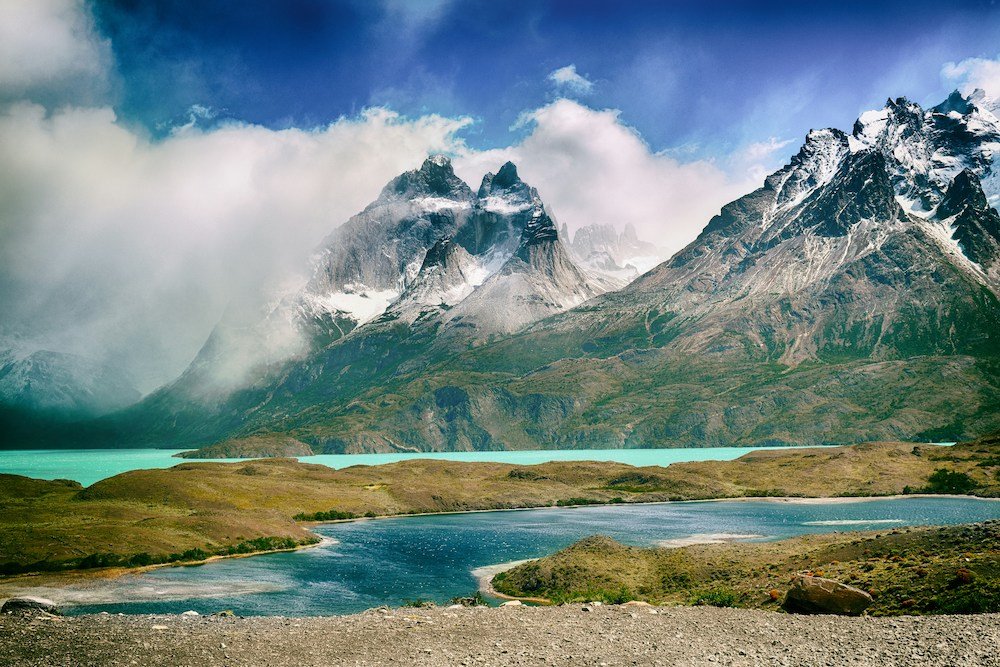
Want to discover what the best Chile islands are to visit for your next holiday?
Chile, known for its diverse landscapes stretching from the arid Atacama Desert to the rugged Andes Mountains, is also home to a stunning array of islands dotting its extensive coastline.
These islands boast unique ecosystems, rich cultural heritage, and unparalleled natural beauty.
As travelers seek out new and off-the-beaten-path destinations, Chile’s islands offer an exciting and relatively unexplored opportunity.
With their pristine beaches, lush forests, and fascinating history, these islands provide a captivating escape from the ordinary.
Moreover, in the wake of global travel disruptions, exploring lesser-known destinations like Chile’s islands allows for a more intimate and immersive travel experience while supporting local economies and sustainable tourism practices.
In this article, we’ll delve into the top seven Chilean islands that should be on every traveler’s radar in 2024.
From the iconic Easter Island with its enigmatic Moai statues to the secluded paradise of Mocha Island, each destination offers a distinct blend of natural wonders, cultural treasures, and unforgettable experiences.
Join us as we embark on a journey through Chile’s enchanting island escapes.
1. Easter Island (Isla de Pascua)

Easter Island, locally known as Isla de Pascua, stands as one of the world’s most iconic and enigmatic destinations.
Located in the southeastern Pacific Ocean, this remote island is renowned for its mysterious Moai statues, which stand as silent sentinels overlooking the landscape.
Beyond its archaeological wonders, Easter Island boasts pristine beaches, volcanic craters, and a rich cultural heritage shaped by its Polynesian roots.
Easter Island is home to the iconic Moai statues, carved from volcanic rock centuries ago.
These monumental figures, ranging in size from a few feet to over 30 feet tall, are scattered across the island, each bearing a unique expression and significance.
Visitors can explore the UNESCO World Heritage-listed archaeological sites of Rano Raraku, where the Moai were carved, and Ahu Tongariki, home to the largest restored Moai platform on the island.
Beyond its archaeological wonders, Easter Island offers a wealth of outdoor adventures. Hiking enthusiasts can traverse the island’s rugged terrain, exploring volcanic craters, lush forests, and coastal cliffs.
For underwater enthusiasts, diving and snorkeling expeditions reveal a vibrant marine ecosystem teeming with colorful fish, coral reefs, and even the occasional encounter with sea turtles or dolphins.
The best time to visit Easter Island is during the shoulder seasons of spring (September to November) and fall (March to May) when the weather is mild, and tourist crowds are fewer.
Accommodation options on the island range from cozy guesthouses and boutique hotels to eco-friendly lodges, providing travelers with a range of choices to suit their preferences and budgets.
It’s advisable to book accommodations well in advance, especially during peak travel periods.
2. Chiloé Island
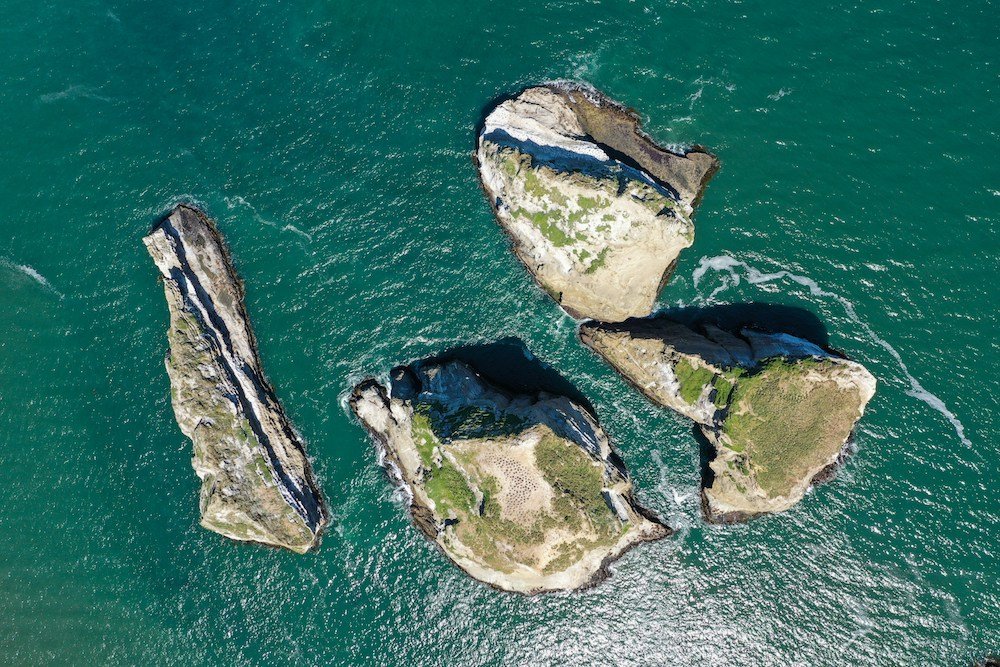
Chiloé Island, nestled off the coast of southern Chile, beckons travelers with its unique blend of culture, history, and natural beauty.
This enchanting island is renowned for its distinctive architecture, vibrant folklore, and mouthwatering cuisine, making it a must-visit destination for those seeking an authentic Chilean experience.
Chiloé Island’s charm lies in its unique culture and landscape. Steeped in mythology and tradition, the island is dotted with picturesque villages where time seems to stand still.
Visitors can immerse themselves in Chiloé’s rich heritage by exploring its colorful palafitos, traditional stilt houses perched above the water, and iconic wooden churches, recognized as UNESCO World Heritage sites.
One of the highlights of any visit to Chiloé is sampling its culinary delights.
The island’s cuisine is a reflection of its coastal location, with an emphasis on fresh seafood and locally sourced ingredients.
From succulent shellfish to hearty seafood stews, Chiloé’s culinary offerings are sure to tantalize the taste buds of even the most discerning food lovers.
In addition to its cultural attractions, Chiloé Island is a paradise for nature enthusiasts.
The island is home to a network of eco-tourism opportunities and nature reserves, where visitors can discover the region’s diverse flora and fauna.
Whether hiking through lush forests, birdwatching in wetlands, or kayaking along tranquil bays, Chiloé offers endless opportunities for outdoor exploration and adventure.
3. Robinson Crusoe Island (Isla Robinson Crusoe)
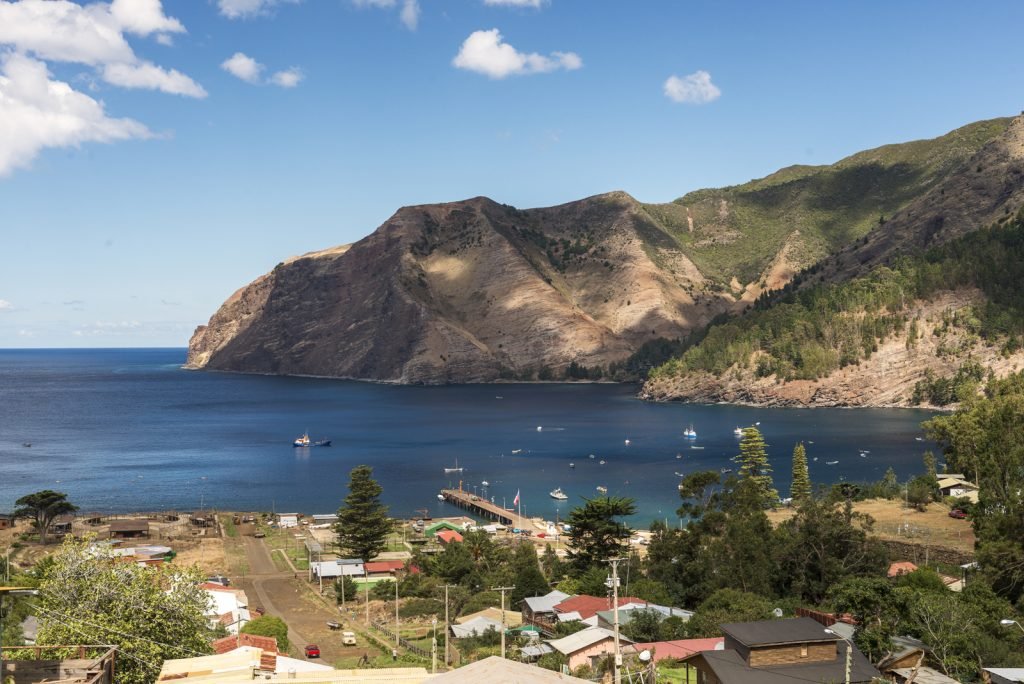
Robinson Crusoe Island, named after the famous castaway tale, is a remote jewel nestled in the Juan Fernández Archipelago off the coast of Chile.
Steeped in history and natural beauty, this idyllic island offers visitors a glimpse into a world of pristine landscapes, rich biodiversity, and intriguing tales of survival and adventure.
The historical background of Robinson Crusoe Island is as captivating as its natural wonders.
The island gained fame as the setting for the real-life story of Alexander Selkirk, a Scottish sailor marooned on its shores in the early 18th century.
Today, visitors can explore Selkirk’s Cave and other landmarks associated with his legendary ordeal, immersing themselves in the island’s storied past.
Robinson Crusoe Island is renowned for its breathtaking landscapes and hiking trails.
From rugged coastal cliffs to lush valleys and cascading waterfalls, the island’s diverse terrain offers endless opportunities for exploration and discovery.
Hikers can embark on scenic trails that wind through pristine forests, providing panoramic views of the surrounding seascape.
Beneath the waves, Robinson Crusoe Island reveals a world of marine biodiversity and diving spots waiting to be explored.
The island’s crystal-clear waters teem with colorful coral reefs, exotic fish, and other fascinating marine life, making it a paradise for snorkelers and divers alike.
Whether exploring shallow reefs or deeper dive sites, visitors can witness firsthand the incredible diversity of underwater ecosystems.
Accommodation options on Robinson Crusoe Island range from rustic eco-lodges to cozy guesthouses, offering travelers a chance to disconnect from the outside world and immerse themselves in the island’s natural beauty.
Travel tips for visiting Robinson Crusoe Island include packing essentials such as sunscreen, insect repellent, and sturdy hiking shoes, as well as planning ahead for transportation and accommodations, given the island’s remote location.
4. Tierra del Fuego
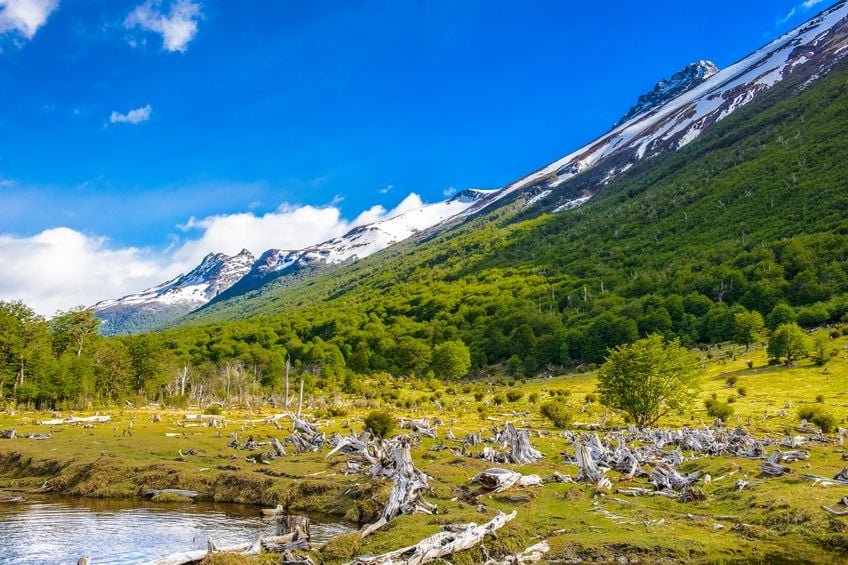
Tierra del Fuego, known as the “Land of Fire,” is a captivating archipelago located at the southernmost tip of South America, shared by Chile and Argentina.
This rugged and remote region, characterized by its pristine landscapes and untamed wilderness, beckons adventurers and nature enthusiasts to explore its natural wonders and unique ecosystem.
Tierra del Fuego’s location at the confluence of the Atlantic and Pacific Oceans lends it a dramatic and diverse landscape.
Towering fjords, majestic glaciers, and expansive national parks define the region’s unparalleled beauty, offering visitors a glimpse into a world of raw and untouched wilderness.
Exploring Tierra del Fuego means immersing oneself in a landscape shaped by the forces of nature over millennia.
Visitors can embark on boat tours through winding fjords, marveling at towering cliffs and cascading waterfalls, or hike through rugged terrain, following trails that lead to secluded lakes and hidden valleys.
The region’s rich biodiversity provides ample opportunities for wildlife encounters.
Tierra del Fuego is home to an array of native species, including Magellanic penguins, southern sea lions, and South American fur seals.
Nature enthusiasts can observe these fascinating creatures in their natural habitat, whether nesting on rocky shores or frolicking in the surf.
Adventure beckons around every corner in Tierra del Fuego.
Trekking enthusiasts can explore remote trails that wind through ancient forests and windswept moors, while kayakers can paddle through tranquil bays and channels, taking in the breathtaking scenery and spotting wildlife along the way.
Other popular activities include fly-fishing in pristine rivers, horseback riding across expansive plains, and even embarking on expeditions to Antarctica from Ushuaia, the southernmost city in the world.
5. Juan Fernández Archipelago
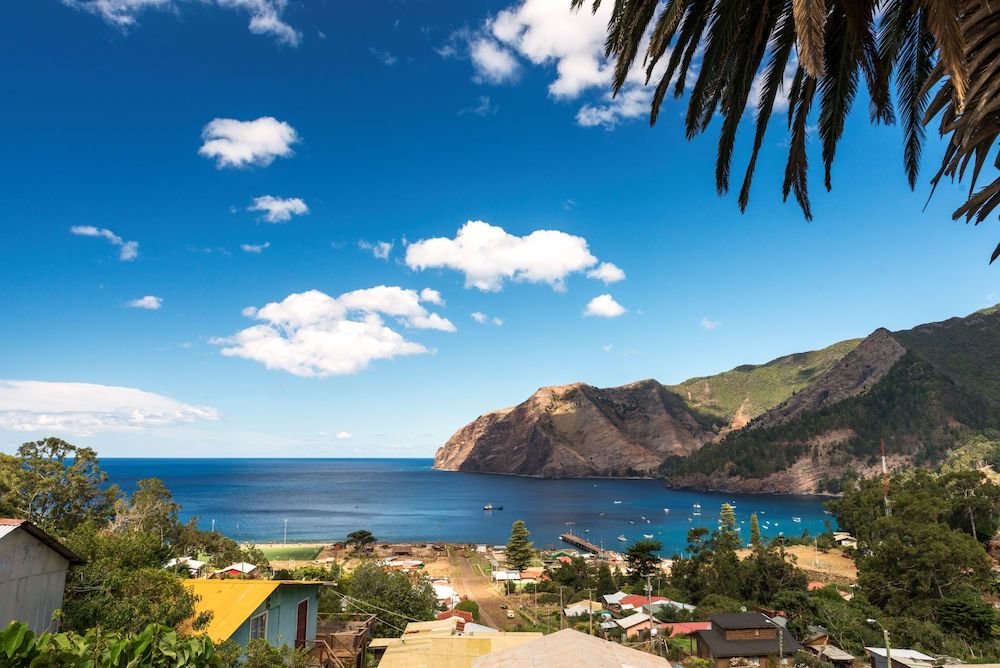
The Juan Fernández Archipelago, a remote and pristine paradise located off the coast of central Chile, is a haven for nature lovers and adventure seekers alike.
Comprising three main islands—Robinson Crusoe, Alejandro Selkirk, and Santa Clara—this archipelago is renowned for its breathtaking landscapes, unique flora and fauna, and commitment to conservation.
The Juan Fernández Islands’ remote beauty captivates visitors from around the world.
Accessible only by boat or small aircraft, these secluded islands offer a true escape from the hustle and bustle of modern life.
With their rugged coastlines, verdant forests, and crystal-clear waters, the archipelago’s landscapes are as diverse as they are awe-inspiring.
Endemic flora and fauna abound in the Juan Fernández Archipelago, making it a hotspot for biodiversity.
The islands are home to a wealth of unique plant and animal species found nowhere else on Earth, including the endangered Juan Fernández fur seal and the Juan Fernández firecrown, a rare hummingbird species.
Visitors can explore the islands’ lush forests and rugged terrain, encountering a myriad of native species along the way.
Scenic hikes and viewpoints offer unparalleled opportunities to immerse oneself in the archipelago’s natural beauty.
From the summit of El Yunque on Robinson Crusoe Island to the rocky cliffs of Alejandro Selkirk, hikers can enjoy sweeping vistas of the surrounding seascape and lush vegetation.
The islands’ network of trails caters to hikers of all skill levels, with routes ranging from leisurely strolls to challenging treks.
Conservation efforts and sustainable tourism initiatives play a vital role in preserving the Juan Fernández Archipelago’s unique ecosystems.
Local authorities and conservation organizations work tirelessly to protect the islands’ fragile environment and promote responsible tourism practices.
Visitors are encouraged to tread lightly, minimize their ecological footprint, and support initiatives aimed at preserving the archipelago’s natural heritage for future generations to enjoy.
6. Mocha Island (Isla Mocha)
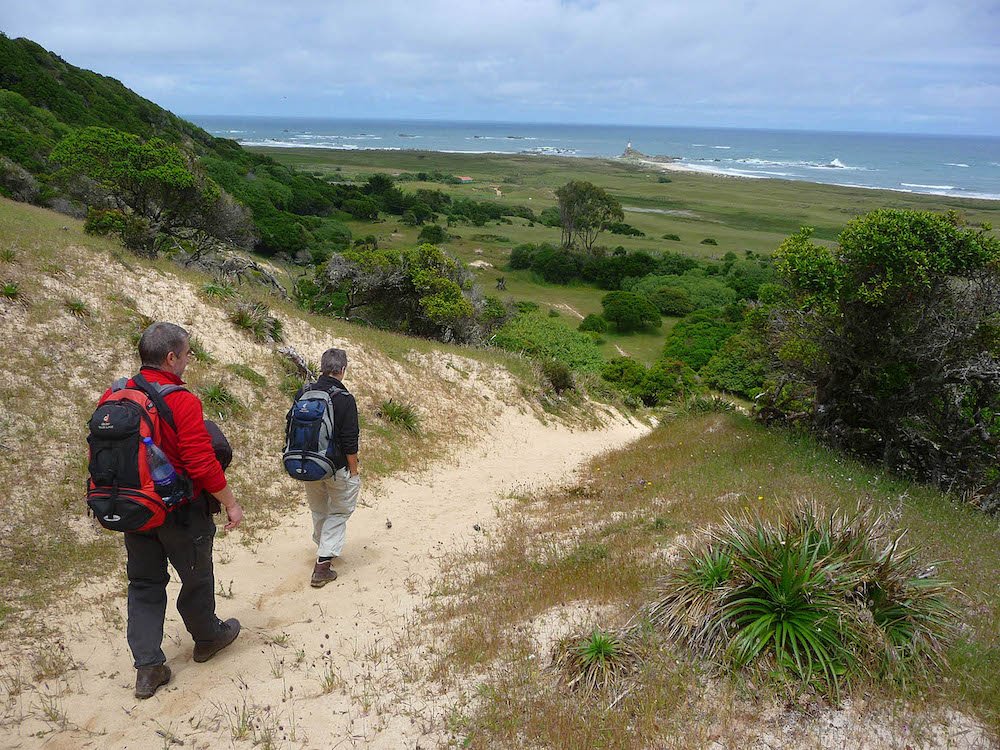
Mocha Island, or Isla Mocha, is a hidden gem nestled off the coast of central Chile, offering visitors an off-the-beaten-path escape into pristine wilderness and natural beauty.
With its rugged coastline, lush forests, and abundant wildlife, Mocha Island beckons adventurers and nature enthusiasts seeking an authentic and unforgettable experience.
Mocha Island’s off-the-beaten-path allure is evident from the moment one sets foot on its shores.
Accessible only by boat, this remote island remains relatively untouched by modern development, preserving its unspoiled landscapes and tranquil atmosphere.
Visitors to Mocha Island can expect to find secluded beaches, hidden coves, and dramatic coastal cliffs waiting to be explored.
The island’s pristine beaches and coastal landscapes are among its most captivating features.
From sweeping sandy shores to rocky outcrops lapped by the turquoise waters of the Pacific Ocean, Mocha Island offers endless opportunities for beachcombing, sunbathing, and beachside picnics.
Nature lovers will delight in the island’s rich biodiversity, with seabird colonies nesting along the rugged coastline and native flora thriving in the island’s lush interior.
Birdwatching enthusiasts will find Mocha Island to be a paradise of avian diversity.
The island is home to a variety of seabird species, including albatrosses, petrels, and cormorants, which flock to its shores to breed and raise their young.
Visitors can observe these magnificent creatures in their natural habitat, whether soaring overhead or perched on rocky cliffs overlooking the sea.
Access to Mocha Island is primarily by boat, with ferries and private charters departing from nearby coastal towns such as Tirúa and Lebu on the Chilean mainland.
While the island does not have traditional accommodation options such as hotels or resorts, visitors can arrange camping trips or stay in rustic cabins operated by local residents, offering a unique opportunity to experience Mocha Island’s natural beauty up close.
7. Quinchao Island

Quinchao Island, nestled in the Chiloé Archipelago off the coast of southern Chile, is a tranquil and charming destination steeped in tradition and folklore.
With its picturesque landscapes, vibrant cultural scene, and warm hospitality, Quinchao Island offers visitors a glimpse into a bygone era and a slower pace of life.
Quinchao Island’s tranquility and charm are evident from the moment one arrives on its shores.
Surrounded by rolling hills, lush pastures, and sparkling blue waters, the island exudes a sense of serenity and tranquility that captivates travelers seeking respite from the hustle and bustle of modern life.
Visitors to Quinchao Island can immerse themselves in the island’s rich cultural heritage by exploring its traditional villages and artisan markets.
Quinchao’s quaint villages, with their colorful wooden houses and cobblestone streets, offer a glimpse into the island’s colonial past and the unique architectural style that defines the Chiloé region.
Artisan markets brim with locally crafted goods, from intricately woven textiles to hand-carved wooden figurines, providing visitors with the perfect opportunity to take home a piece of Quinchao’s heritage.
Religious festivals and cultural events play a central role in island life, providing opportunities for residents and visitors alike to come together in celebration and camaraderie.
From lively music and dance performances to solemn religious processions, Quinchao Island’s calendar is filled with events that showcase its rich cultural traditions and community spirit.
Exploring Quinchao Island is best done at a leisurely pace, allowing ample time to soak in its natural beauty and immerse oneself in its vibrant culture.
Visitors can wander through charming villages, stroll along scenic coastal paths, or embark on bicycle tours of the island’s picturesque countryside.
Boat tours offer a unique perspective of Quinchao’s coastline, with opportunities to spot seabirds, dolphins, and other marine life along the way.
Conclusion
As we conclude our exploration of Chile’s enchanting island destinations, it’s clear that the country’s coastal treasures offer a wealth of experiences waiting to be discovered.
From the iconic Moai statues of Easter Island to the remote wilderness of Mocha Island, Chile’s islands beckon travelers with their breathtaking landscapes, rich cultural heritage, and abundant wildlife.
Recap of the 7 Best Chilean Islands to Visit in 2024
- Easter Island (Isla de Pascua): Home to the iconic Moai statues and a wealth of archaeological wonders.
- Chiloé Island: A vibrant tapestry of colorful palafitos, delicious seafood, and rich folklore.
- Robinson Crusoe Island (Isla Robinson Crusoe): A remote paradise steeped in history and natural beauty.
- Tierra del Fuego: Land of fjords, glaciers, and unparalleled wilderness adventures.
- Juan Fernández Archipelago: A sanctuary of endemic species and stunning vistas.
- Mocha Island (Isla Mocha): Off-the-beaten-path allure and pristine coastal landscapes.
- Quinchao Island: Tranquility, traditional villages, and cultural festivities await.
We encourage readers to embark on their own island adventure and explore the diverse beauty of Chile’s coastal gems.
Whether seeking adventure in the rugged wilderness, immersing oneself in centuries-old traditions, or simply relaxing on secluded beaches, Chile’s islands offer something for every traveler’s taste.
From the mystical allure of Easter Island to the remote tranquility of Quinchao Island, Chile’s island paradises promise unforgettable experiences and lasting memories.
As you set sail to explore these enchanting destinations, may you discover the true essence of Chile’s coastal beauty and return home with stories to share and hearts full of wonder.
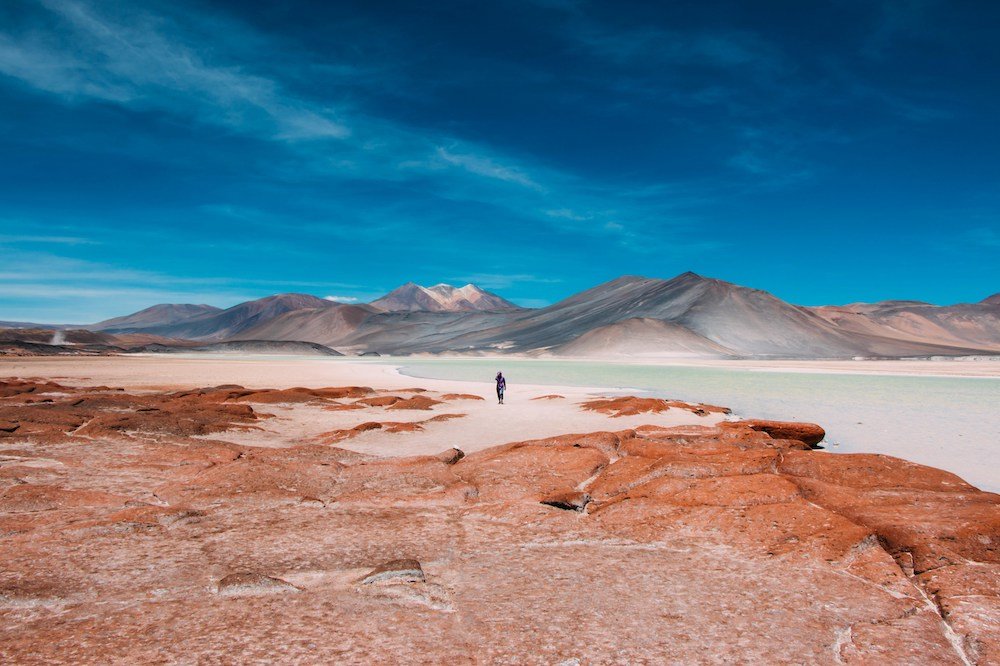
FAQ’s About the 7 best Chile islands:
How many islands are in Chile?
Chile is home to over 2,000 islands along its extensive coastline, ranging from small islets to larger landmasses.
What is the name of the famous island in Chile?
Easter Island, also known as Isla de Pascua, is one of the most famous islands in Chile, renowned for its mysterious Moai statues.
What islands are off the coast of Chile?
Off the coast of Chile, you can find several island groups, including the Juan Fernández Archipelago, Chiloé Archipelago, and the Desventuradas Islands.
What is the isolated island in Chile?
Robinson Crusoe Island, part of the Juan Fernández Archipelago, is considered one of the most isolated islands in Chile.
What is the island between Argentina and Chile?
Tierra del Fuego is an island shared by both Argentina and Chile, located at the southern tip of South America.
What is the most remote island in Chile?
Mocha Island, or Isla Mocha, is often considered one of the most remote islands in Chile due to its secluded location off the coast.
What Polynesian island belongs to Chile?
Easter Island, or Isla de Pascua, is a Polynesian island that belongs to Chile and is famous for its monumental Moai statues.
What island is Chile’s possession in the Pacific?
Easter Island, also known as Rapa Nui, is Chile’s possession in the Pacific Ocean, located approximately 2,300 miles west of the Chilean mainland.
What island is controlled by Chile?
Chile controls numerous islands along its coastline, including Easter Island, Chiloé Island, and the Juan Fernández Islands, among others.
